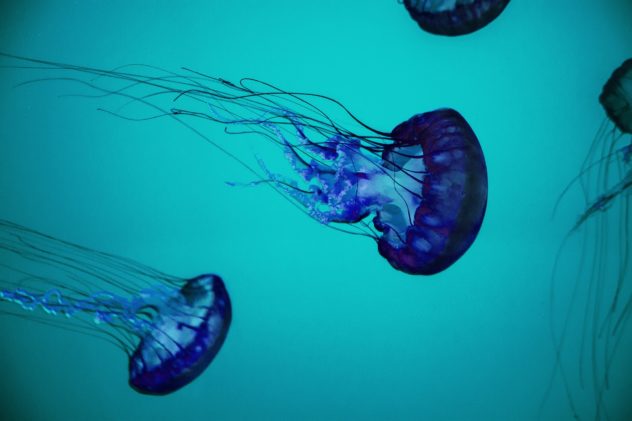Pre-reading questions:
- Do you like animals? Why or why not?
- What is your favorite marine animal and why?
Vocabulary:
- poisonous /POI-zuh-nuhs/
- reduce /ri-DOOS/
- damaging /DAM-i-jing/
- extreme /ik-STREEM/
- failure /FEYL-yer/
[adjective] very harmful and able to cause illness or death
Inland Taipan is a poisonous snake found in Australia.
[verb] to make something less in price, size, amount, etc.
The shoe factory will reduce production because of its low demand.
[adjective] causing harm
She writes a damaging article about the celebrity she secretly hates.
[adjective] to the greatest degree
She is very thin now after she went on an extreme diet.
[noun] the fact of something not working as it should
The king suffered from kidney failure.
A group of researchers from the University of Sydney found a possible cure for the world’s poisonous box jellyfish sting. The team used CRISPR, a gene-editing tool that helped recognized how the venom destroys human cells. Researchers tried particular types of cyclodextrins, a family of drugs that reduces bad cholesterol, to block the venom from spreading through the body. Based on the study, the venom becomes more damaging when it reacts to cholesterol. They figured out that cyclodextrins can also have the same effect for box jellyfish venom if applied to the sting as soon as possible.
According to the US National Ocean Service, the Australian box jellyfish is considered the most dangerous aquatic animal in the world. This kind of jellyfish has 15 tentacles on each box side that can grow up to approximately 10 ft. Each tentacle carries venom that can kill more than 60 people. The venom can lead to extreme pain, necrosis, cardiac failure, and death within minutes after left exposed. Associate Professor Greg Neely, a researcher from the University of Sydney, said, “It turns out by blocking the venom’s ability to kill the cells, we can also block some of the pain.” The team goals to look for a way where the cure would be directly injected to humans.
According to the US National Ocean Service, the Australian box jellyfish is considered the most dangerous aquatic animal in the world. This kind of jellyfish has 15 tentacles on each box side that can grow up to approximately 10 ft. Each tentacle carries venom that can kill more than 60 people. The venom can lead to extreme pain, necrosis, cardiac failure, and death within minutes after left exposed. Associate Professor Greg Neely, a researcher from the University of Sydney, said, “It turns out by blocking the venom’s ability to kill the cells, we can also block some of the pain.” The team goals to look for a way where the cure would be directly injected to humans.
Comprehension Questions:
- In the article, what is the most dangerous sea creature in the world?
- What is the name of the drug that is used to eliminate cholesterol?
- What is CRISPR?
- How many tentacles does a box jellyfish have?
- Why is the Australian box jellyfish considered dangerous?
Discussion Questions:
- What kind of marine animal are you most afraid of and why?
- Have you seen a jellyfish? Please describe it.
- Do you think experts can use venom to cure diseases? Why or why not?
- Do you think using animals in medical experiments are reliable? Why or why not?
- How do you usually treat an animal bite or sting? Please elaborate.
